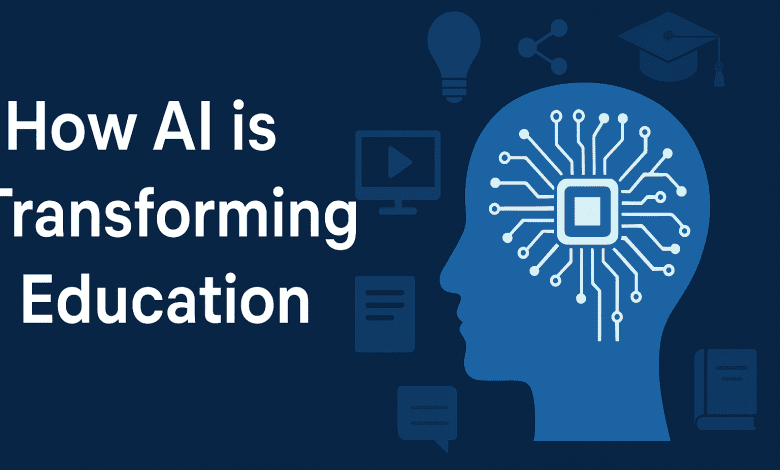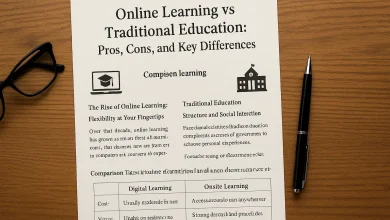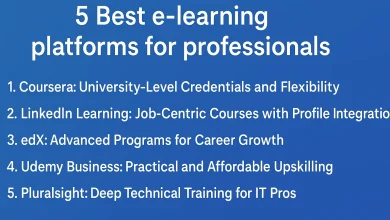How AI is Transforming Education

Artificial intelligence is reshaping many fields, and education stands among the most impacted. This technological advancement is redefining traditional learning methods, enabling more efficient and tailored educational experiences. As AI integrates deeper into classrooms and institutions, it brings both new opportunities and challenges. This article explores the significant ways AI is changing education and improving outcomes for students, educators, and schools alike.
How AI is Transforming Personalized Learning in Education
Modern educational technologies powered by artificial intelligence create unique learning journeys tailored to each student’s individual abilities and challenges. By analyzing individual progress, AI tools adjust content delivery to maximize comprehension and retention. This shift moves education away from a uniform approach, encouraging a student-centered environment that recognizes unique learning styles.
Key Points:
- Feedback is immediate and tailored to specific needs.
- Educators can identify and support struggling students more effectively.
How AI Helps Students in Education Through Intelligent Tutoring Systems
AI-driven tutoring systems offer interactive, real-time support that simulates one-on-one teaching. These systems provide explanations, answer questions, and guide problem-solving, accessible anytime and anywhere. This technology helps students work through difficulties independently while receiving consistent assistance.
Key Points:
- Students gain constant access to academic support.
- Confidence and self-directed learning improve as a result.
How AI is Transforming Education by Automating Administrative Tasks
Behind the scenes, AI streamlines routine administrative work such as grading, scheduling, and record management. This reduces workloads for educators and administrators, allowing them to devote more time to teaching and student interaction.
Key Points:
- Grading of assignments is faster and more consistent.
- Scheduling and attendance tracking become automated.
- Staff efficiency improves, reducing operational bottlenecks.
How AI is Being Evolved in Education with Predictive Analytics
Educational institutions now harness AI to analyze trends and predict student performance. By identifying early warning signs of academic struggle, schools can intervene proactively, increasing the chances of student success and retention.
Key Points:
- Predictive models spot at-risk students before problems escalate.
- Tailored support plans are developed using data insights.
- Institutions make more informed decisions about resource allocation.
How AI is Transforming Education in the Classroom with Virtual Assistants
AI-powered virtual assistants help manage classroom activities and provide instant responses to student inquiries. They facilitate a more interactive and flexible learning environment, enhancing engagement, especially in remote or hybrid settings.
Key Points:
- Virtual assistants answer questions and provide learning resources on demand.
- Students experience greater autonomy in managing their learning.
How Artificial Intelligence is Transforming Higher Education Through Accessibility Tools
AI tools break down barriers by offering support for diverse learning needs. Features like real-time translation, transcription, and speech recognition improve accessibility, enabling more inclusive participation in higher education.
Key Points:
- Language differences are bridged with instant translation services.
- Accessibility features support students with disabilities.
- Enhanced communication tools foster collaboration across cultures.
How Generative AI is Transforming Education and Curriculum Development
Generative AI technologies assist educators in creating fresh, tailored educational materials. By automating content creation and updating curricula based on feedback and trends, teachers can deliver more relevant and engaging lessons.
Key Points:
- Automated generation of quizzes, exercises, and multimedia content.
- Dynamic curriculum adaptation in response to learner needs.
- Reduced preparation time allows focus on instructional quality.
How AI is Transforming Education Through Teacher Development Tools
AI supports teachers by analyzing their instructional methods and suggesting personalized professional development paths. By receiving ongoing insights, teachers can enhance their teaching methods and stay aligned with the latest developments in educational practices.
Key Points:
- Performance data highlights areas for improvement.
- Customized training recommendations enhance teaching practices.
- Professional growth becomes data-informed and targeted.
How AI is Helping Students Emotionally and Transforming Education
Recognizing emotional wellbeing is critical for effective learning. AI systems can now detect signs of stress or disengagement, alerting educators to offer timely support and create a nurturing learning atmosphere.
Key Points:
- Emotional state detection improves student support strategies.
- Early intervention helps maintain motivation and focus.
- Promotes a healthier and more empathetic educational environment.
How AI is Transforming Education Responsibly: Ethics and Data Privacy
With increasing reliance on AI, educational institutions must prioritize ethical use and safeguard sensitive information. Transparent policies and responsible practices ensure technology benefits learners without compromising privacy or fairness.
Key Points:
- Clear guidelines govern AI deployment and data use.
- Protection of student data is paramount.
Conclusion: How AI is Transforming Education Now and in the Future
Artificial intelligence is fundamentally changing education by making learning more personalized, accessible, and efficient. From individualized instruction to administrative improvements and emotional support, AI’s influence spans every educational level. Moving forward, embracing AI with a focus on ethics and inclusion will be key to unlocking its full potential in shaping the future of education.




